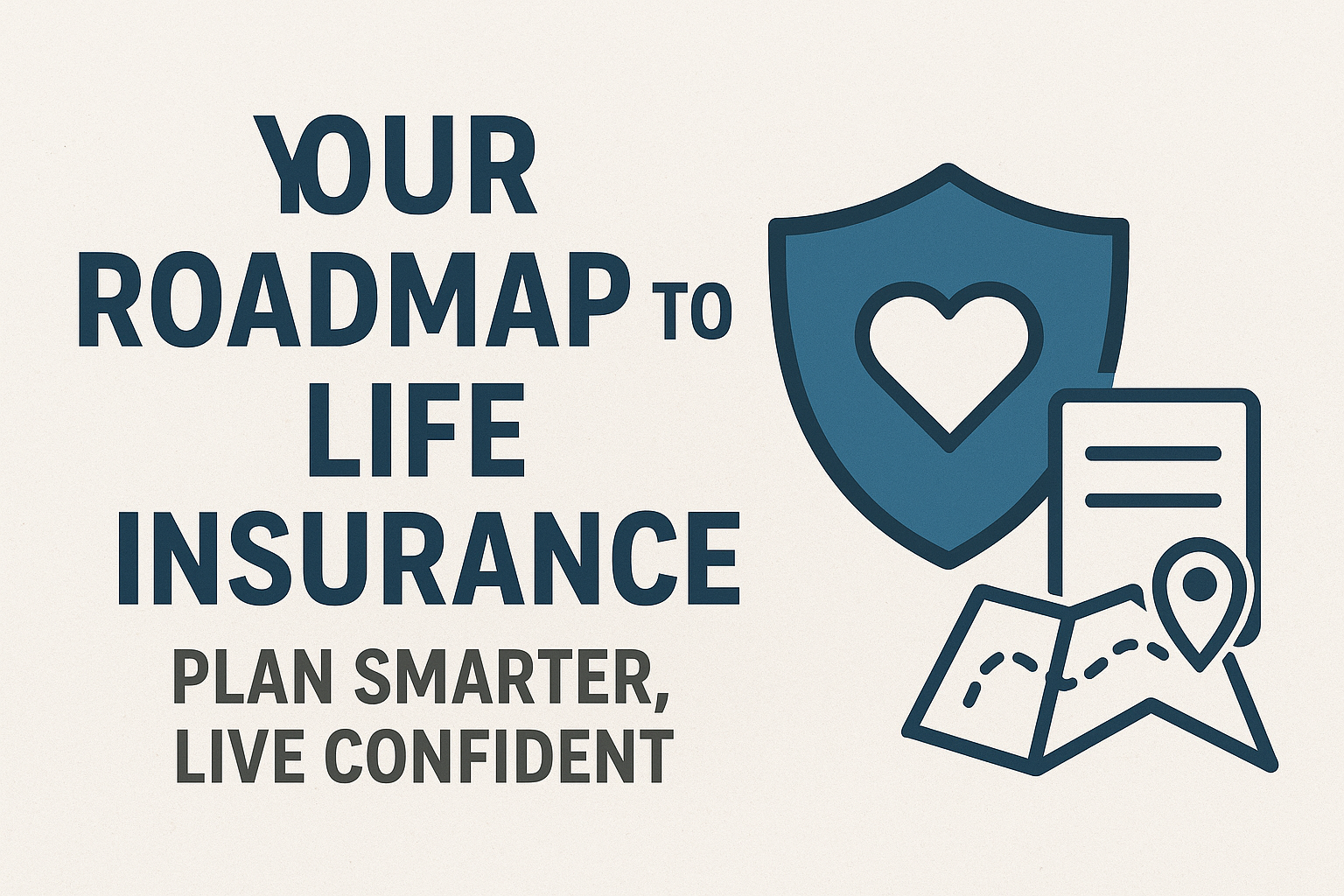Life is full of uncertainties. While you can’t predict the future, you can prepare for it. One of the smartest steps in financial planning is securing life insurance, a powerful tool that protects your loved ones, builds family financial security, and ensures confidence in every stage of life.
Unfortunately, many people delay purchasing life insurance because they find it confusing or unnecessary. This roadmap simplifies the journey, guiding you step by step to plan smarter and live more confidently with the right life insurance strategy.
Why Life Insurance Matters
Life insurance is more than just a policy—it’s a financial safety net. If something happens to you, it ensures your family won’t face financial hardship. Beyond protection, it can also play a vital role in retirement security, estate planning, wealth protection, and even long-term savings.
Here’s what life insurance can provide:
- Income replacement for your family
- Debt repayment (mortgages, loans, credit cards)
- Education funding for children
- Tax benefits and efficient wealth transfer
- Peace of mind knowing your loved ones are secure
Step 1: Understand Your Financial Goals
Your roadmap begins with clarity. Ask yourself:
- Do I need to replace income for my spouse or children?
- Do I want coverage for debts and mortgages?
- Am I looking for a tool to build long-term savings?
- Should this be part of my retirement planning or estate planning?
Life insurance isn’t “one-size-fits-all.” Knowing your goals will guide you to the right policy.
Step 2: Learn the Types of Life Insurance
There are different policies for different needs. Here’s a breakdown:
1. Term Life Insurance
- Coverage lasts 10–30 years.
- Affordable, simple, and offers high death benefits.
- Ideal for families who need income replacement during peak earning years.
2. Whole Life Insurance
- Permanent coverage that lasts a lifetime.
- Builds cash value over time.
- Great for wealth protection and long-term family financial security.
3. Universal Life Insurance
- Permanent policy with flexible premiums.
- Cash value grows tax-deferred.
- Works well for retirement security and savings.
4. Variable Life Insurance
- Combines coverage with investments in stocks and bonds.
- High growth potential but carries risk.
- Suited for investors who want protection plus growth.
Step 3: Calculate How Much Coverage You Need
Too little coverage leaves your family vulnerable, while too much can mean overpaying. A simple formula is:
- Income replacement: Annual income × 10–15
- Debt repayment: Mortgages + personal loans
- Future obligations: Education + healthcare costs
- Final expenses: Funeral and medical bills
💡 Example: A person earning $75,000 annually with a $200,000 mortgage and two kids may need $1.5M–$2M in coverage.
Step 4: Factor in the Benefits Beyond Protection
Life insurance isn’t just about death benefits. Many policies offer:
- Wealth protection – Safeguarding assets from erosion.
- Tax benefits – Death benefits are tax-free, and cash value often grows tax-deferred.
- Long-term savings – Permanent insurance can act as an emergency fund or college savings.
- Retirement security – Policies with cash value can supplement your retirement income.
- Estate planning – Smoothly transfer wealth to heirs while minimizing estate taxes.
Step 5: Integrate Life Insurance into Financial Planning
To truly maximize benefits, life insurance should work alongside:
- Retirement accounts (401k, IRA, pensions)
- Investments (stocks, bonds, mutual funds, real estate)
- Emergency funds
- Estate planning strategies
This integration ensures both wealth accumulation and wealth preservation, giving you complete family financial security.
Step 6: Avoid Common Mistakes
- Waiting too long – Premiums are cheaper when you’re young and healthy.
- Relying only on employer coverage – It’s limited and ends when you change jobs.
- Buying without planning – Don’t buy more or less coverage than you actually need.
- Ignoring policy reviews – Life events like marriage, children, or buying a home may require more coverage.
Step 7: Choose the Right Policy
When evaluating policies, consider:
- Your age and health – Premiums rise with age.
- Your goals – Term for affordability, whole/universal for long-term planning.
- Provider strength – Choose insurers with strong financial ratings and good claim settlement history.
- Professional advice – A financial advisor can align policies with your broader goals.
Step 8: Explore Advanced Uses of Life Insurance
For high-income earners and business owners, life insurance can be more than family protection:
- Key Person Insurance – Protects a business from the loss of a vital employee.
- Buy-Sell Agreements – Ensures smooth business succession.
- Charitable Giving – Leave a legacy while enjoying tax benefits.
- Estate Planning – Use life insurance to offset estate taxes and preserve wealth.
Step 9: Real-Life Example
Consider a 38-year-old parent earning $90,000 annually with a $250,000 mortgage and two kids.
- Term life: Provides affordable income replacement for 20 years.
- Whole life: Builds cash value to help fund college or supplement retirement.
- Estate planning: Ensures a tax-free legacy for heirs.
This layered strategy creates complete financial protection and retirement security.
Step 10: Review and Adjust
Life changes—your insurance should too. Review policies every few years or after major events like:
- Marriage or divorce
- Birth of a child
- Birth of a child
- Buying a home
- Starting or selling a business
- Approaching retirement
Regular reviews ensure your coverage always matches your financial reality.
The Confidence Factor
At its heart, life insurance is about confidence. Knowing your family’s future is secure allows you to live fully today. With a clear roadmap—understanding your goals, choosing the right policy, and integrating it into your financial plan—you can plan smarter and live confident.
Conclusion
Life insurance is not just a product—it’s a foundation for financial security. It ensures income replacement, debt coverage, retirement security, wealth protection, and estate planning advantages. By following this roadmap, you can avoid common mistakes, choose wisely, and build a future where your loved ones are financially secure, no matter what life brings.

